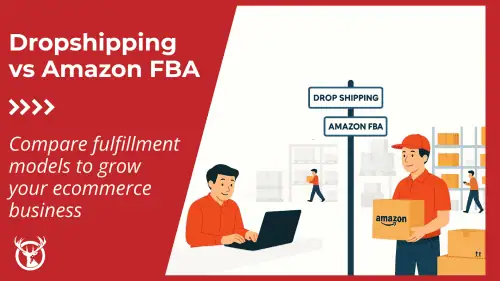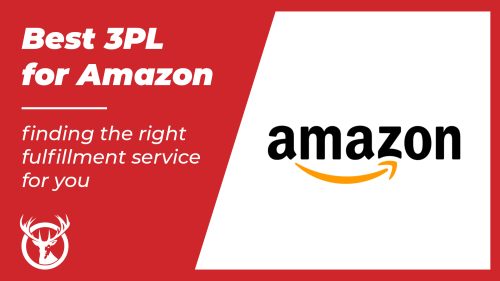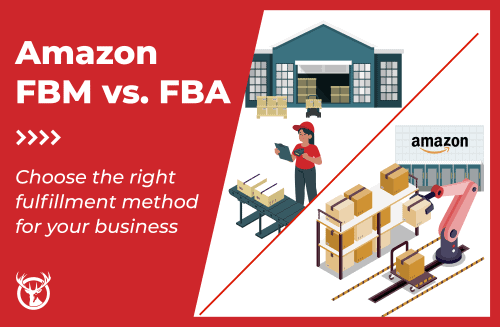The Amazon pick and pack fee, also called its fulfillment fee, applies to the Fulfillment by Amazon (FBA) program. This charge is a per-unit fee that helps Amazon cover costs and generate income when it sends your products to consumers.
The Amazon pick and pack fee changes significantly according to product category, size, and weight. All FBA fulfillment fees are charged to you, not your customer, as orders ship.
In this post, we look at some of the standard pick and pack fees Amazon charges and how you can optimize shipping costs.
How to calculate Amazon pick and pack fees
Amazon determines your FBA pick and pack fee based on four things:

Product-size tiers

Shipping weights

Dimensional weights

Fee categories
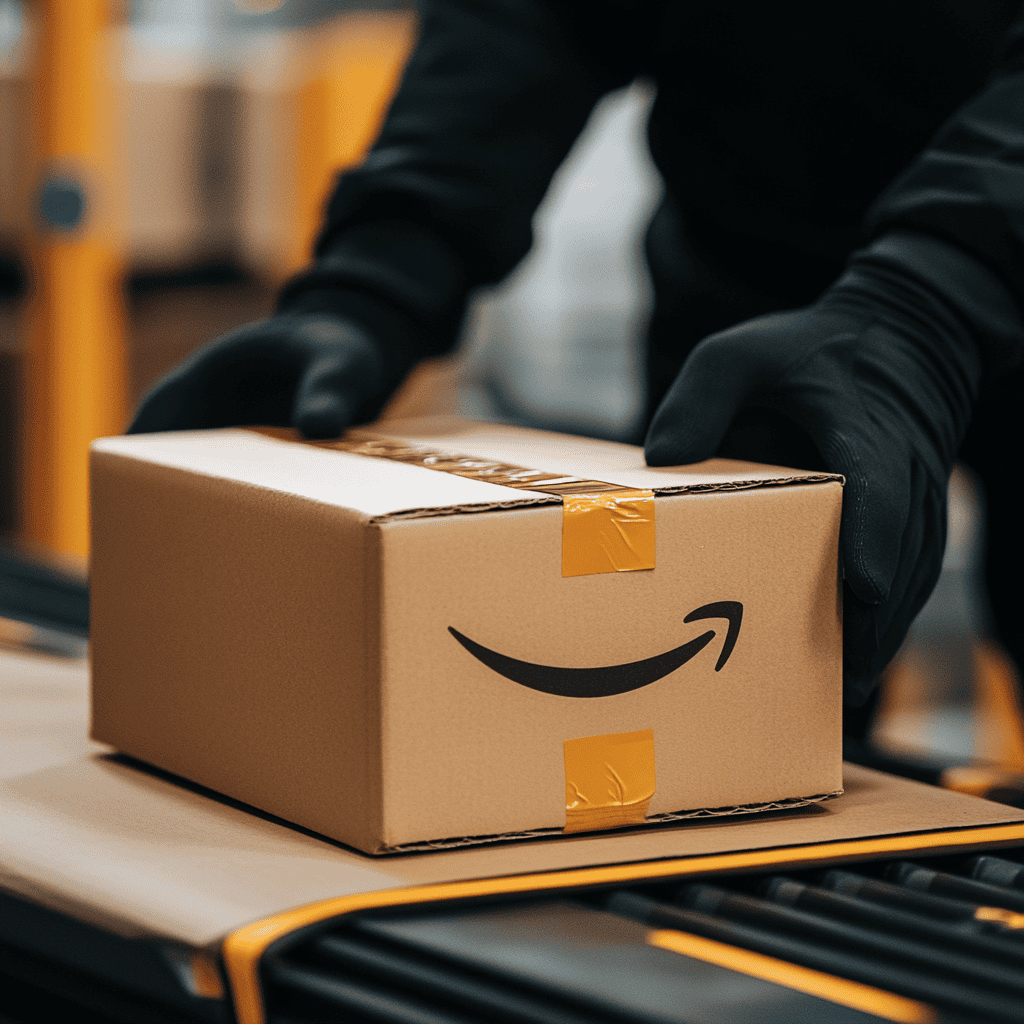
How each factor impacts your pick and pack fee may vary across individual products. You may also have a monthly subscription fee depending on how many items you sell. Your pick and pack fees are additional to any monthly fees.
Let’s dive into the details.
Product-size tiers
The Amazon pick and pack fee is generally based on your product’s size. The size tiers are determined by the product type, weight, and dimensions. Amazon uses the measurements standard to your location, which means inches and pounds if you’re in the U.S.
Location may also impact inventory management and other Amazon FBA fees, so confirm the local fee structure for your specific location to be safe.
Take a look at this table of Amazon product tiers for the U.S., based on Amazon’s February 2024 update. It should help you identify your product’s size tier, but keep in mind that you’ll need to meet every requirement in each column.
For example, a large standard-size item meets all the following criteria when fully packaged:

Unit weight is less than or equal to 20 pounds

Longest side (length) is less than or equal to 18 inches

Median side (width) is less than or equal to 14 inches

Shortest side (height) is less than or equal to 8 inches
Your Amazon FBA fees may also change based on product category labels. For example, there may be a different price calculation for standard-size apparel and standard-size non-apparel goods.
| Product size tier | Unit weight* | Longest side | Median side | Shortest side | Length + girth |
|---|---|---|---|---|---|
| Small standard-size | 16 oz. | 15 inches | 12 inches | 0.75 inches | n/a |
| Large standard-size | 20 lb. | 18 inches | 14 inches | 8 inches | n/a |
| Small oversize | 70 lb. | 60 inches | 30 inches | n/a | 130 inches |
| Medium oversize | 150 lb. | 108 inches | n/a | n/a | 130 inches |
| Large oversize | 150 lb. | 108 inches | n/a | n/a | 165 inches |
| Special oversize | >150 lb. | >108 inches | n/a | n/a | >165 inches |
Shipping weights
In most cases, Amazon’s standard size tiers for weight look at the unit weight of your products to help determine shipping costs. The product size tier noted above impacts what shipping weight calculations you’ll use.
If goods are under 1 pound, then the weight is rounded up to the nearest ounce. If your product weighs more than 1 pound, Amazon rounds up to the nearest pound.
Fees for small standard, special oversize, and extra-large (150+ pounds) are calculated using only standard or unit weight, not dimensional weight, which we’ll discuss next.
Dimensional (DIM) weights
Amazon looks at the dimensions of your products to determine how much to charge you. In some cases, looking at the dimensions leads to a shipping cost based on standard or unit weight. In other cases, products require the use of dimensional weight to determine shipping costs.
You can calculate dimensional (DIM) weight by measuring the length, width, and height of your product. Multiply these together and then divide that number by 139, which is a conversion factor set by Amazon. This final number will give you the DIM weight.
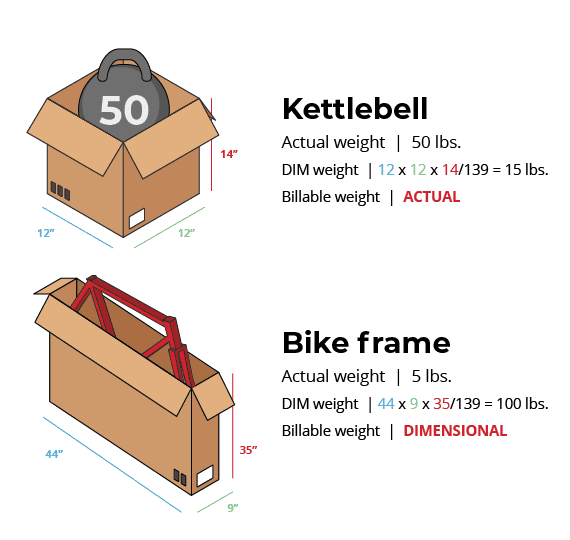
2024 Amazon DIM weight update
The 2024 DIM weight update introduced a large, bulky size tier and extra-large size tier. These replace the oversize size tiers. An item is considered large and bulky when it is not small or large standard-sized and meets all of the following criteria when fully packaged:

Greater of unit or dimensional weight is less than or equal to 50 pounds

Longest side (length) is less than or equal to 59 inches

Median side (width) is less than or equal to 33 inches

Shortest side (height) is less than or equal to 33 inches

Girth plus length is less than or equal to 130 inches
If your items exceed the large bulky-size limit, they are considered extra-large. Extra-large items require special delivery options to accommodate size, weight, special handling requirements, and any other restrictions or demands.
Get more information and a DIM weight calculator from Red Stag here.
Fee categories
Amazon’s fee categories determine if your product will incur additional fulfillment fees in a couple of ways:
- Help you understand your product category so you can determine other fees, like size tiers.
For example, apparel has its own set of tiers that are undergoing changes in 2024. You can find current apparel fees here, including product size tiers and fee updates for February and April 2024. - You can also use these categories to determine if your products will have additional expenses.
The company has special handling fees for specific items.
Understanding how product categories may impact price is especially important because your shipping product category may not align with your product category on the Amazon marketplace.
Amazon pick and pack fees rate cards
The marketplace publishes rate cards with FBA fulfillment fee tables to help you find the correct expense for each SKU. These rate cards can help you determine how to calculate pick and pack fees and total fulfillment costs.
What are Amazon’s pick and pack fees?
The Amazon pick rate changes over time just like other fulfillment process fees and is based on market conditions, including demand.
Fee tables are current as of early 2024, but Amazon indicates its FBA pick & pack fee will change during the year. At Red Stag Fulfillment, we find the tables are updated regularly. Bookmark this article to double-check FBA pick and pack pricing as your business evolves.
Based on Amazon’s published information as of this writing, here’s what you can expect:
| Product size tier | Shipping weight | Longest side | Median side | Shortest side | Length + girth |
|---|---|---|---|---|---|
| Small standard-size | Up to 16 oz. | Up to 15 inches | Up to 12 inches | Up to 0.75 inches | n/a |
| Large standard-size | Up to 20 lb. | Up to 18 inches | Up to 14 inches | Up to 8 inches | n/a |
| Large bulky | Up to 50 lb. | Up to 59 inches | Up to 33 inches | Up to 33 inches | Up to 130 inches |
| Extra-large 0 to 50 lb. | Up to 50 lb. | Extra-large exceeds 59 inches for the longest side or 33 inches for the median side or 33 inches for the shortest side or 130 inches for the length + girth, or if the product’s greater of unit weight or dimensional weight exceeds 50 lbs. | |||
| Extra-large 50+ to 70 lb. | 50+ to 70 lb. | ||||
| Extra-large 70+ to 150 lb. | 70+ to 150 lb. | ||||
| Extra-large 150+ lb. | >150 lb. | ||||
| Size tier | Shipping weight | 2024 fulfillment fee (Feb. 5, 2024 to Apr. 14, 2024) |
2024 fulfillment fee (Starting Apr. 15, 2024) |
|---|---|---|---|
| Large bulky | 0 – 50 lb. | $9.73 + $0.42/lb. interval above first lb. | $9.61 + $0.38/lb. interval above first lb. |
| Extra-large 0 to 50 lb. | 20 lb. | $26.33 + $0.38/lb. interval above first lb. | $26.33 + $0.38/lb. interval above first lb. |
| Extra-large 50+ to 70 lb. | 70 lb. | $40.12 + $0.75/lb. interval above first lb. | $40.12 + $0.75/lb. interval above first lb. |
| Extra-large 70+ to 150 lb. | 150 lb. | $54.81+ $0.75/lb. interval above first lb. | $54.81 + $0.75/lb. interval above first lb. |
| Extra-large 150+ lb. | 150 lb. | $194.95 + $0.19/lb. interval above first lb. | $194.95 + $0.19/lb. interval above first lb. |
| Size tier | Shipping weight | 2024 fulfillment fee (Feb. 5, 2024 to Apr. 14, 2024) |
2024 fulfillment fee (Starting Apr. 15, 2024) |
|---|---|---|---|
| Large bulky | 0 – 50 lb. | $9.73 + $0.42/lb. interval above first lb. | $9.61 + $0.38/lb. interval above first lb. |
| Extra-large 0 to 50 lb. | 20 lb. | $26.33 + $0.38/lb. interval above first lb. | $26.33 + $0.38/lb. interval above first lb. |
| Extra-large 50+ to 70 lb. | 70 lb. | $40.12 + $0.75/lb. interval above first lb. | $40.12 + $0.75/lb. interval above first lb. |
| Extra-large 70+ to 150 lb. | 150 lb. | $54.81+ $0.75/lb. interval above first lb. | $54.81 + $0.75/lb. interval above first lb. |
| Extra-large 150+ lb. | 150 lb. | $194.95 + $0.19/lb. interval above first lb. | $194.95 + $0.19/lb. interval above first lb. |
Multi-channel fulfillment fees
| Single unit order | |
|---|---|
|
Ebook reader Dimensions: 6.2 x 4.3 x 0.42 inches Unit weight: 5.56 oz. Rounded shipping weight: 6 oz. |
|
| Base fulfillment fee: small standard size (4+ to 8 oz.) | |
| Standard delivery speed rate | $7.15 |
| Lithium battery fee | $0.11 |
| Total base fulfillment fee | ($7.15 + $0.11) = $7.26 |
| Additional Surcharges | |
| Block Amazon Logistics | ($7.26 x 5%) = $0.36 |
| Remote area delivery | ($7.26 x 100%) = $7.26 |
| Total surcharges | ($0.36 + $7.26) = $7.62 |
| Total fulfillment fee | |
| Base fulfillment fee ($7.26) + surcharges ($7.62) = $14.88 | |
At scale, the combined unit and surcharge fees shown in the example above can severely impact landed costs at a SKU level and across your business.
You may not be able to control how Amazon charges, but you can take steps to offset additional costs or save money on fulfillment.
Managing shipping costs
Many businesses simply can’t afford the uncertainty of unexpected Amazon pick and pack fees.
At Red Stag Fulfillment, we can help you manage or sidestep unpredictable or confusing storage fees, shipping fees, and other fulfillment center costs. And with our strategically located warehouses, you can reach 96% of U.S. homes in two days or less, backed by our guarantees.
Want FBA support? We can help you prep and deliver inventory to Amazon. Check out our complete Amazon fulfillment guide or reach out to get started.






